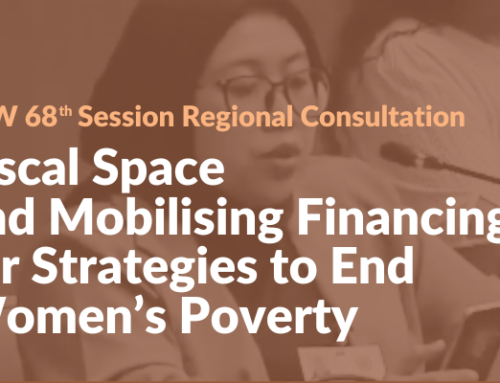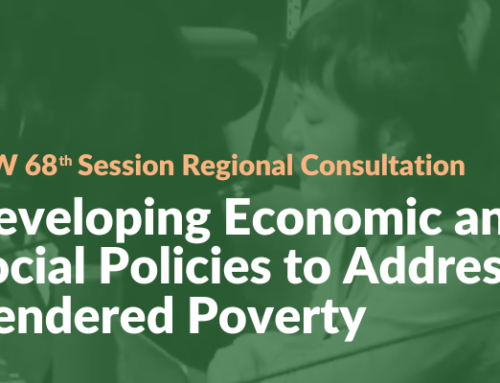Beijing Declaration and Platform for Action
The Beijing Declaration and Platform for Action (BPfA) was adopted by consensus on 15 September 1995 by 189 countries during the Fourth World Conference on Women, which was held in Beijing, China. The BPfA is an internationally agreed declaration considered to be one of the major milestones of the global women’s movement. It calls for strong commitments on the part of the governments and other institutions to fully realise women’s human rights and gender equality through the implementation of the roadmap set by the BPfA.
It focuses on 12 areas of concern where action is most urgently needed. These areas are: (1) women and poverty; (2)education and training of women; (3) women and health; (4) violence against women; (5) women and armed conflict; (6) women and the economy; (7) women in power and decision-making; (8) mechanisms for the advancement of women; (9) human rights of women; (10) women and the media; (11) women and the environment; and (12) the girl child.
For each critical area of concern, a roadmap is created by setting strategic objectives and concrete actions for implementation to improve the social, economic, political, cultural, and environmental dimensions of women’s lives. Although BPfA it is not a binding treaty and does not provide any redress mechanisms, it affirmed that issues of women’s rights and equality must be part of any government’s agenda.
BPfA +20 Review Process
The Commission on the Status of Women (CSW) and UN Women are leading the review of progress towards implementing the BPfA. In March 2015, representatives of member States, civil society organisations, and other stakeholders will gather at CSW in New York to conclude the review process of the BPfA implementation, 20 years after its inception.
Currently, UN Women is coordinating a review process that involves evaluations at the national, regional, and global levels. Governments are encouraged to work with CSOs to come up with comprehensive national-level reviews on the implementation of the BPfA. These reports are also expected to address the challenges encountered in the implementation of the BPfA and to integrate the broader discussion around the post-2015 development agenda.
At the regional level, Regional UN bodies are leading the coordination of national review processes with UN Women to come up with the regional analyses on the Beijing +20 review as informed by the national reports. In the Asia and the Pacific Region, the UN Economic and Social Commission for Asia and the Pacific (UN ESCAP), has convened the Asian and Pacific Conference on Gender Equality and Women’s Empowerment: Beijing +20 Review to consolidate the regional position in the global review process.
Asia and Pacific Civil society engagement in the Beijing +20 review
The UN ESCAP and UN Women welcomed the engagement of the CSOs in the Asia Pacific Region. To better organise civil society engagement in this process, the Asia Pacific Beijing +20 Civil Society Steering Committee has been created composed of 18 member organisations including regional networks and constituency based groups. Its main objective is to guide CSO preparations in influencing the Beijing +20 review process in the Asia Pacific region and globally.
APWLD Updates and Position:
Of the 12 Critical Areas identified in the Beijing Declaration and Platform for Action, APWLD focused in its regional submission on those issues that are most relevant to APWLD’s members—poverty; decent work; violence; decision-making; and the environment.
Women and Poverty: Approximately 2.5 billion women in the Asia Pacific are currently living on less than USD$10 per day, including 600 million who live on less than USD$1.25 per day. In addition to the economic and social rights violations that are inherent in the condition of extreme poverty, women living in poverty are prevented from enjoying a broad range of civil, political and cultural rights. Women’s poverty in the region is directly linked to the implementation by governments and international financial institutions (IFIs) of neoliberal macroeconomic policies and growth-driven development models, which also underpin international economic governance as a whole. Each of the elements of macroeconomic policy identified in Critical Area A of the Beijing Platform has had a demonstrably discriminatory impact on women in the Asia Pacific, including decreasing women’s access to essential services; depriving women of access to land and natural resources that they depend on for their livelihood; increasing the burden of unpaid care work borne by women; and exacerbating the vulnerability of women to exploitation in the course of their employment in both formal and informal sectors.
Violence Against Women: Despite the fact that nearly all countries in Asia and the Pacific have ratified the Convention on the Elimination of all forms of Discrimination against Women (CEDAW), gender inequality and violence against women continue to be a daily reality for women in the region, including domestic violence, rape, sexual harassment, and violence against women in the contexts of armed conflict and migration. Further, the prevalence of targeted violence against particular groups of ethnic women and girls proves that a culture of impunity continues to exist.
Women in Power and Decision Making: In the Asia Pacific region, women remain consistently and systematically excluded from participation and decision-making at all levels, starting at home and extending to the highest level of government. The region is still far from achieving gender parity, exacerbated by the fact that many women are still constrained by the patriarchal dichotomy of a “public” and “private” sphere. The prevalence of this dichotomy, coupled with inadequate or discriminatory policies, have continued to obstruct women from participating in decision-making and leadership.
Women and the Economy: The nature of women’s work in Asia and the Pacific has been fundamentally shaped by neoliberal economic reforms and development strategies adopted by governments in recent decades, frequently at the urging of international trade and finance institutions. Principally, these reforms are trade and investment liberalisation; privatisation; deregulation; and aggressively promoting export-oriented industries. While the reorientation of economies towards labour-intensive, export-focused industry has increased rates of women’s participation in the labour force, Asia continues to have the highest gender pay gap in the world, and the majority of women work in employment that lacks basic security, benefits, and working conditions.Further, women in Asia and the Pacific remain responsible for the unpaid work that sustains their families. Women workers therefore assume a double burden of work which renders their equal enjoyment of a range of rights impossible.
Women and the Environment: Rural and indigenous women are the primary users of natural resources in the Asia Pacific region. However, they are often absent and systematically excluded in decision-making process related to management of natural resources. This often leads to gender-blind policies and practices that reinforce women’s marginalization and discrimination. Climate change also has a disproportionate and devastating impact on women’s live in the region. The loss and damage to lives, property, land, and livelihood caused by climate change-induced events affecting rural, indigenous, and urban poor women must be addressed, in addition to urgently accelerating mitigation and adaptation measures that are formulated with the full and meaningful participation of women.
APWLD Priorities: As we approach 20 years since the Beijing Platform was adopted, APWLD is focusing on the following to accelerate the implementation of the Platform and fulfill the promises made by governments to the region’s women: .
- Accountability: Although the focus was on implementation, accountability mechanisms were not formally incorporated into the BPfA beyond the global reviews at CSW. This has allowed governments to all too often ignore the commitments made under the Platform. The Beijing+20 review process is an opportunity to hold governments to account for their commitments, and demand stronger, more effective accountability mechanisms. The following link is a map that provides information on the existing accountability mechanisms developed around Beijing Platform for Action in countries all over Asia and the Pacific: https://www.google.com/maps/d/edit?mid=zLII6Og8_cGY.k7YtTT75jGyA
- Integration with the Post-2015 Process: While there have been advancements in gender equality since the initial adaptation of the Beijing Declaration and Platform, an inequitable model of development has deepened inequalities at the expense of the lives and wellbeing of women. In December 2015, the UN will adopt a new set of goals which shape future development priorities, including a goal on gender. We must recognize this as an opportunity to accelerate the implementation of governments’ obligations under the BPfA and ensure there is no regression from commitments already made.





